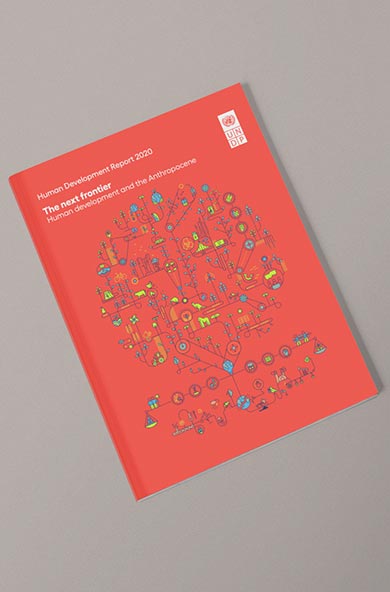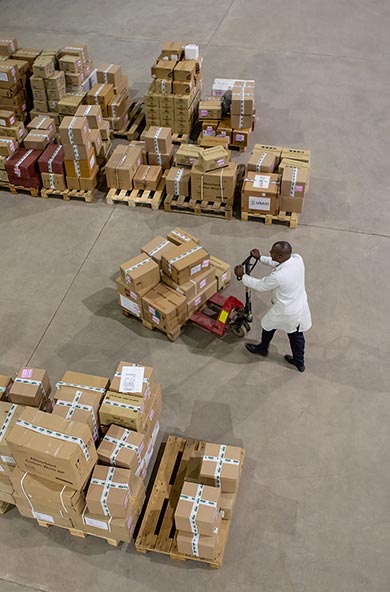By Yrika Maritz, Head of Experimentation

There is a place in Namibia, where the arid landscape meets the resilience of its people. This is Otjimbingwe - a small settlement nestled in a valley at the convergence of the Swakop River and the Omusema River. This unique geographical feature has historically made it an important settlement in the Erongo region.
UNDP Namibia's recent follow-up visit to this community was not just a routine check-in but a celebration of progress and potential. This visit marked the handover of four all-in-one computers and uncapped Wi-Fi access, a significant step in an initiative that began as a modest experiment. The experiment using the Asset Based Community Development (ABCD) approach mapping the community’s strengths and competencies during the last visit evolved into a beacon of hope and opportunity.
The initiative started with the idea of replicating rural community ICT centres, traditionally housed in constituency councillor's offices or halls, but this time, placing it within the walls of a primary school. This shift was to ensure that this location promoted accessibility and inclusivity. The primary school, with its landmark green paint, and often referred to as the “Green School” has clean facilities, sound leadership, and strong community support. These qualities made it an ideal host for this experiment. Unlike other schools in the region, the Otjimbingwe Primary School stood out as a positive deviant, demonstrating the capacity and willingness to embrace new possibilities.

As the UNDP team arrived in Otjimbingwe, they were greeted by the vibrant energy of the community. The school grounds buzzed with excitement, not just from the students but from the entire community, eager to see the fruits of this collaboration. The four all-in-one computers, sleek and modern, were not only symbolic but also served as gateways to a world of knowledge and opportunity. What truly set this initiative apart was the one-year uncapped Wi-Fi access provided by UNDP as a pilot to ensure that the community could fully utilize these resources without the burden of connectivity costs.
The significance of this initiative was further amplified by the serendipitous discovery that Peace Corps Namibia had also in the same month, donated ten computers to the community. This unexpected contribution highlighted the power of collaboration and the importance of being open to emerging possibilities. The computer centre, initially envisioned as a simple ICT hub, now had the potential to transform into a Community Sustainable Development Goal (SDG) Impact Lab. Here, people could not only learn but also incubate new ideas and turn them into actionable projects, driving sustainable development in their community.

One of the most heartwarming outcomes of this initiative was the visible strengthening of bonds between the two chiefs in the community. Historically, their differences had been a source of tension, but the shared interest in the community's progress brought them together. This positive unintended consequence underscored the importance of building on what's working and approaching projects from an asset-based community development perspective.
Trust and relationships played a crucial role in the success of this initiative. The relationships developed during the initial visits helped identify key gatekeepers and build a foundation of trust. This trust was essential in involving the community in developing their own monitoring, learning, and evaluation frameworks, ensuring that the initiative was not just for the community but by the community.

The introduction of Cricket Namibia as a partner added an unexpected but delightful dimension to the project. The learners and teachers were introduced to the sport, fostering a sense of teamwork and discipline. It was heartening to see that Cricket Namibia's involvement went beyond sports. Together, we have launched a learning experiment that pairs the recycling of plastic waste in Otjimbingwe with their partner Rent-A-Drum. The plastic waste would be monetized and repurposed into cricket bats, which would then be exported to other parts of the world. This innovative approach not only addresses environmental concerns but also has the potential to create economic opportunities for the community.
As we reflect on our visit, eight key takeaways emerge, each a lesson in the power of community-driven development:
- Identify the Positive Deviants: The primary school in Otjimbingwe exemplified the capacity and willingness to host the experiment, setting a benchmark for other schools in the region.
- Be Open to Emerging Possibilities: The computer centre's potential to become a Community SDG Impact Lab highlighted the importance of flexibility and openness to new ideas.
- Build on What's Working: Learning from other rural community ICT centres, the asset-based community development approach proved to be effective.
- Positive Unintended Consequences: The strengthened bonds between the community chiefs demonstrated the ripple effect of collaborative initiatives.
- Trust and Relationships are Important: Building trust and identifying gatekeepers were crucial steps in the project's success.
- Involve the Community: Engaging the community in developing their own monitoring, learning, and evaluation frameworks ensured ownership and sustainability.
- Embrace Unusual Partners: The partnership with Cricket Namibia showcased the value of unconventional collaborations.
- Leverage Technology for Insights: The data extracted from the computers could provide valuable insights into community needs, informing future projects.
The follow-up visit to Otjimbingwe was more than a handover of technology; it was a celebration of community spirit, innovation, and the endless possibilities that arise when people come together with a shared vision. As the sun set over the Namibian landscape, the glow of the computer screens inside the primary school symbolized a brighter future for Otjimbingwe, one where technology and collaboration pave the way for sustainable development.

 Locations
Locations



















